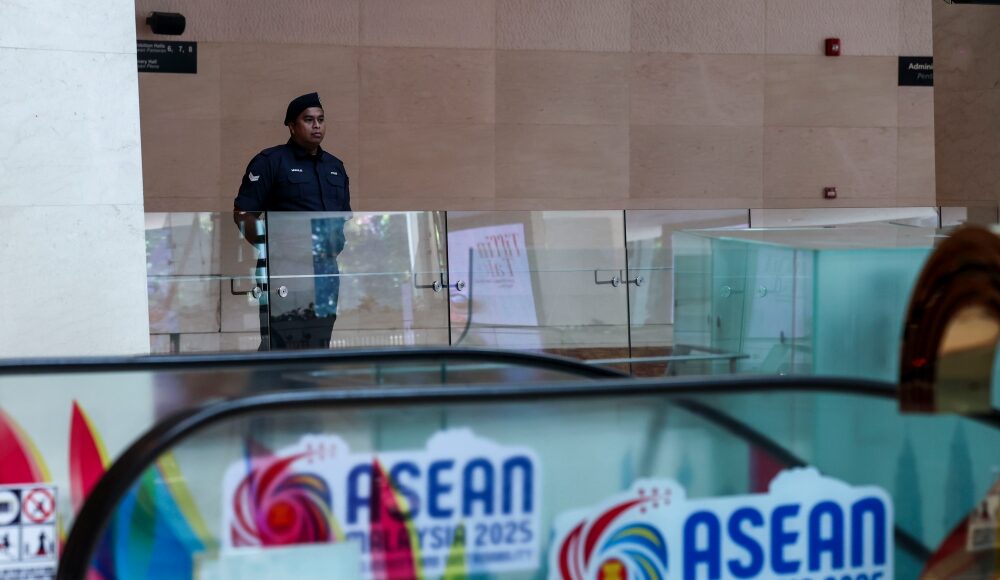MAY 21 — When Prime Minister Xanana Gusmão visited Malaysia in December 2024, it was not merely a routine diplomatic engagement. It signified a renewed push to advance the political groundwork for Timor-Leste’s long-awaited entry into Asean. Speaking alongside Malaysian Prime Minister Anwar Ibrahim, both leaders reaffirmed what has become increasingly clear: Timor-Leste has waited long enough. As Asean leaders convene in Kuala Lumpur on 24 May 2025 under Malaysia’s chairmanship, the region faces a choice that is both symbolic and strategic: whether to welcome Southeast Asia’s youngest democracy into its fold finally or to defer, once again, with consequences.
Having written on Timor-Leste’s regional engagement over the past decade, I have seen its progress unfold through both hopeful milestones and frustrating delays. The upcoming decision is not merely bureaucratic; it is geopolitical, institutional, and deeply reflective of what Asean envisions for its future.
Asean’s unfinished map
Asean’s aspiration for a unified Southeast Asia has been nearly fulfilled since the late 1990s, following the admission of Cambodia in 1999. The exception, of course, has been Timor-Leste: a country that geographically, historically, and culturally belongs in the region, but has remained an observer for over two decades.
After formally applying in 2011, Timor-Leste was granted observer status in 2022 and provided with a detailed roadmap for accession in 2023. As of early 2025, there are reportedly 88 Asean instruments that Timor-Leste must fulfil before attaining full membership. The country has made substantial progress, including the appointment of a Vice Minister for Asean Affairs, participation in high-level meetings, and the development of a national compliance framework. With President José Ramos-Horta expressing full political commitment and regional leaders increasingly supportive, the conditions for membership are gradually falling into place.
Yet Asean’s slow progress reflects deeper structural concerns, namely, that admitting Timor-Leste would force the bloc to reconcile its identity as both a community of norms and a functional institution.
The strategic stakes: Three scenarios
To understand what’s at stake, it helps to map out possible scenarios.
Scenario 1: Full admission in 2025 — A legacy of inclusion
In the best-case scenario, Asean leaders agree on 24 May to admit Timor-Leste as the 11th member, effective either immediately or by a fixed date in 2026. Membership comes with phased implementation of Asean’s 69 economic instruments and continued support via the Initiative for Asean Integration (IAI).
This outcome would mark a high point for Malaysia’s chairmanship and reinforce Asean’s role as a politically inclusive regional body. It would provide Timor-Leste with developmental incentives, greater institutional stability, and access to multilateral mechanisms. It would also enhance Asean’s diplomatic legitimacy at a time when its silence on Myanmar has weakened its credibility.
Crucially, this scenario enables Asean to fulfil its geographic mandate by incorporating the last remaining Southeast Asian nation and providing the Asean-11 with a fresh narrative of unity and forward momentum.
Scenario 2: Conditional or delayed entry — The safe middle ground
A more cautious outcome might see Asean reaffirm its “in principle” agreement but defer full membership pending further technical compliance. This could involve stretching the roadmap over several more years or requiring additional assessments by the Asean Coordinating Council Working Group.
While this may appear pragmatic, it risks political backlash. Timor-Leste’s leadership and its public may perceive it as another stalling tactic. It would also strain Malaysia’s efforts to demonstrate chairmanship leadership, particularly after publicly championing Dili’s accession.
From a geopolitical perspective, delay could also invite other actors, such as China, Australia, or Japan, to step in more visibly with bilateral development offers, shifting Dili’s long-term orientation away from Asean’s core.
Scenario 3: Continued exclusion — Asean’s reputational risk
The least strategic outcome would be continued deferral without a clear path forward, whether due to internal disagreement, bureaucratic inertia, or a consensus breakdown.
This scenario carries the highest reputational cost for Asean. It reinforces critiques that the bloc is slow, ineffective, and unable to accommodate diversity. It would also risk alienating Timor-Leste, pushing it toward alternative alignments in the Indo-Pacific security and economic architecture.
In this future, Asean sends a message that its institutional gatekeeping trumps its political vision, which is a risky stance at a time when regional cooperation is being challenged by power competition and economic fragmentation.
Development Gaps and Institutional Readiness
No one disputes that Timor-Leste has development gaps. Its GDP per capita is among the lowest in Southeast Asia, almost 50% of its population faces multidimensional poverty, and its civil service is overstretched. Critics highlight the burden of participating in Asean meetings annually, a challenge even for larger member states.
But Asean has already created flexible frameworks for less developed countries. Cambodia and Laos were granted special and differential treatment when they joined. Malaysia has proposed easing or revising outdated economic obligations. This is not about lowering standards. It is about updating them to match realities.
With technical support from Malaysia, Indonesia, and other countries, Timor-Leste can build its institutional capacity over time. This is not only feasible, it is what Asean was designed to do.
Security personnel have been deployed around the Kuala Lumpur Convention Centre ahead of the ASEAN Summit, set to take place from May 26 to 28. — Bernama pic
Malaysia’s Chairmanship
Malaysia has a historic opportunity to shape the trajectory of Asean. It has already taken concrete steps: funding a dedicated Asean unit for Timor-Leste in Jakarta, providing diplomatic training, and openly advocating for inclusion.
For Prime Minister Anwar Ibrahim, delivering Timor-Leste’s admission would align with his broader push for a more inclusive Asean, one that values solidarity over elitism. It would also leave a legacy that transcends bureaucratic summits: a message that Asean can still act decisively in service of its founding principles.
While Malaysia’s support has been consistent and vocal, the final decision will still depend on broader regional consensus and how member states interpret readiness.
Timor-Leste, for its part, is not seeking entry for prestige. It seeks recognition, partnership, and the means to build a resilient, regionally embedded future. Its youth population, democratic institutions, and strategic geography make it a partner worth investing in.
By admitting Timor-Leste, Asean demonstrates its commitment to walking the talk on community-building. By delaying again, it risks appearing as a club for the capable, rather than a community of care.
Having followed Timor-Leste’s regional journey for over a decade, I believe the question now is not if, but how and how soon. On 24 May, the region will be watching not just for an outcome, but for a signal of what Asean wants to be beyond 2025.
*Khoo Ying Hooi, PhD, is an associate professor at Universiti Malaya.
** This is the personal opinion of the writer or publication and does not necessarily represent the views of Malay Mail.





